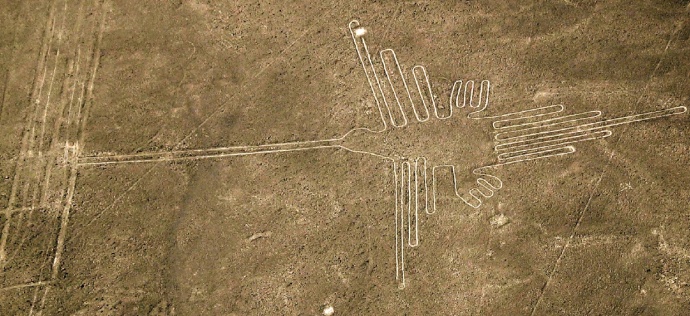


The Nazca lines are geoglyphs, lines drawn on the ground, of the Nazca desert, an arid plateau that stretches for about eighty kilometers between the cities of Nazca and Palpa, in southern Peru. The more than 13,000 lines form over 800 drawings, which include the stylized profiles of common animals in the area (the whale, the parrot, the lizard over 180 meters long, the hummingbird, the condor and the enormous spider about 45 meters).

On 31 January 2018, a Peruvian truck driver entered the protected site for 100 meters, seriously damaging some drawings. It is believed that the geoglyphs were traced during the flowering of the Nazca Civilization, between 300 BC and the 500 d.C. by the population that inhabited the area: the Nazca. The lines are drawn by removing the stones containing iron oxides from the desert surface, thus leaving a contrast with the lighter gravel below. The Nazca plain is not windy and the climate is quite stable so the giant designs have remained intact for hundreds of years.

Because of the superimposition of the motifs, it is believed that they were made in two successive stages: first the figures and then the geometric designs. Nevertheless, due to the characteristics of the soil it is very difficult to safely date the period in which they were built, especially due to the difficulty of applying the dating system with Carbon 14, which has not given satisfactory results. Scientists have used other methods, such as the comparison between the figures of the geoglyphs and those found on the pottery of the Nazca civilization.
At the edge of the Pampas, archaeologists have discovered the ceremonial city of the Nazca, Cahuachi, from which the makers of the lines are believed to have come.
Nazca Lines
Address: Nazca
Phone:
Site:
Location inserted by
Culturalword Abco